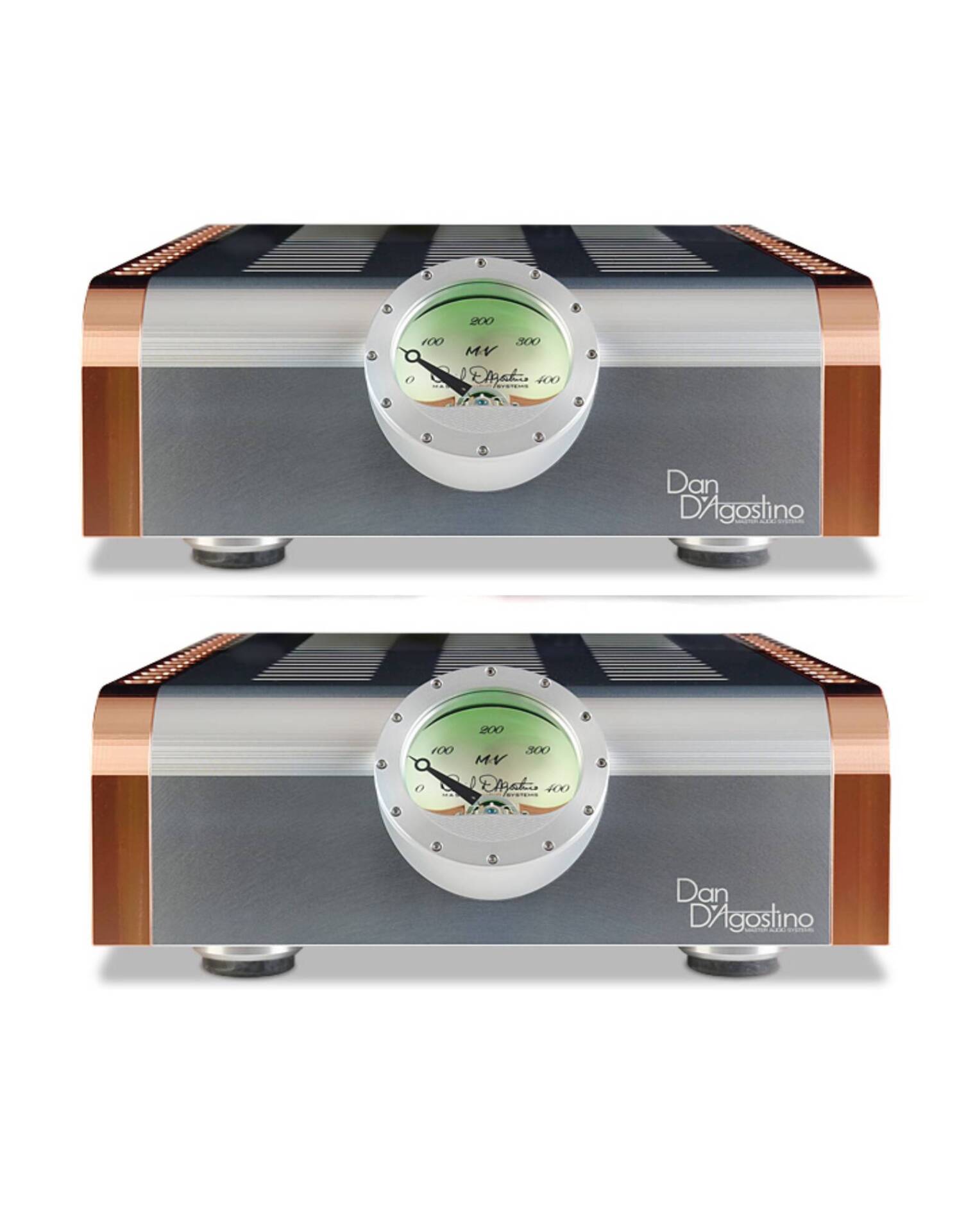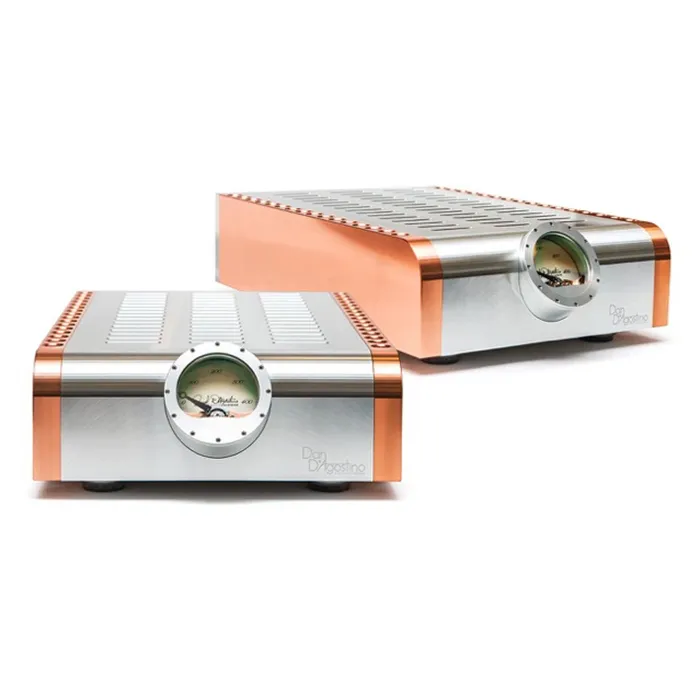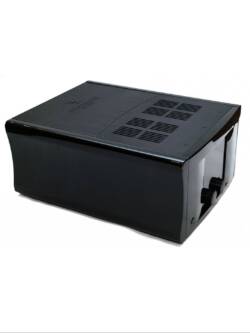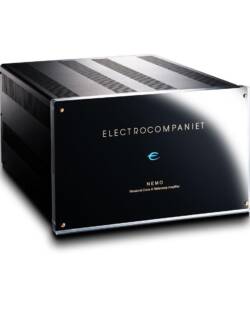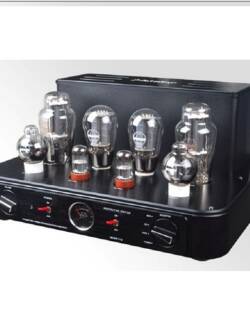D’Agostino M400 Power Amplifiers
Original price was: R1,400,000.00.R750,000.00Current price is: R750,000.00.
Description:
- Solid state, fully balanced class-AB monoblock power amplifier.
- Inputs: 1 pair balanced (XLR). Outputs: 1 pair binding posts.
- Power output: 400W into 8 ohms (26.0dBW), 800W into 4 ohms (26.03dBW), 1600W into 2 ohms (26.04dBW).
- Frequency response: 1Hz–200kHz, –1dB 20Hz–20kHz, ±0.1dB.
- Input impedance: 1M ohm. Output impedance: 0.11 ohm. Signal/noise ratio: 115dB, unweighted.
- Distortion at 400W, 1kHz into 8 ohms: 0.09%.
Dimensions: 12.5″ (317mm) W × 21.5″ (546m) D × 5.25″ (133mm) H. Weight: 95lb (43.1kg).
Finish: Silver or black with copper trim. Custom finishes upon request.
Price: $79,950/pair. Approximate number of dealers: 30 in the US, 36 in North America. Warranty: five years parts and labor, original owner only.
Description
D’Agostino M400MxV Power Amplifier
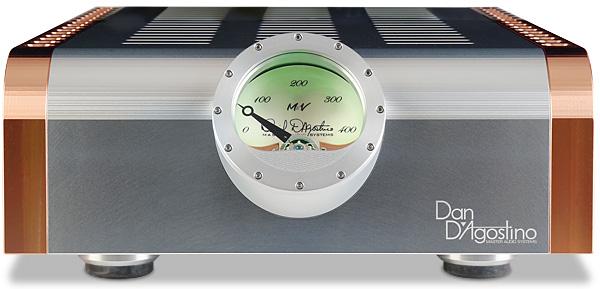
 A bigger PSU, more power transistors and a new input/driver stage – all inspired by the ‘Relentless experience’ – gives D’Agostino’s M400MxV monoblocks more Momentum!Avoirdupois aside, Dan D’Agostino Master Audio Systems’ Momentum M400MxV monoblock just may be the least fussy or fiddly power amp one can aspire to in the extreme high-end. Of course, something cute and tiny like a PS Audio Sprout [HFN Feb ’15] or Quad Vena [HFN Jan ’15] can be lifted with one hand and requires no degrees in electronics, but that’s ‘real world’ gear. At £90,000 per pair, the M400MxVs are as exclusive as it gets, and such a strong physical presence is de rigueur.
A bigger PSU, more power transistors and a new input/driver stage – all inspired by the ‘Relentless experience’ – gives D’Agostino’s M400MxV monoblocks more Momentum!Avoirdupois aside, Dan D’Agostino Master Audio Systems’ Momentum M400MxV monoblock just may be the least fussy or fiddly power amp one can aspire to in the extreme high-end. Of course, something cute and tiny like a PS Audio Sprout [HFN Feb ’15] or Quad Vena [HFN Jan ’15] can be lifted with one hand and requires no degrees in electronics, but that’s ‘real world’ gear. At £90,000 per pair, the M400MxVs are as exclusive as it gets, and such a strong physical presence is de rigueur.
However, that’s as far as high-end excess goes because these Momentum M400MxV monoblocks may run warm, but not fry-an-egg warm. And while I have never begged for more power with the Momentum Stereo [HFN Aug ’12], the early ones delivering around half the power of the monoblocks, the M400MxV simply sounds ‘louder’ and more powerful even when set to the same levels. Clearly this is the aural manifestation of an amplifier working less hard than another, the ease in the sound being so readily discernible that it almost overshadows the other virtues – and they are legion.
Legacy Looks
Visual conditioning, at least for followers of audiophile fashion, must also be a given – the lacquered copper heatsinks with venturi tunnels, choice of natural- or black-anodised alloy, and Breguet-style dial being staples of D’Agostino’s amps since the beginning. So handsome are these green-lit dials that I can’t imagine anyone opting to dim them. There’s only one needle per chassis – it’s a monoblock, after all – but as with other D’Agostino amps, the scale on this power meter is essentially uncalibrated.
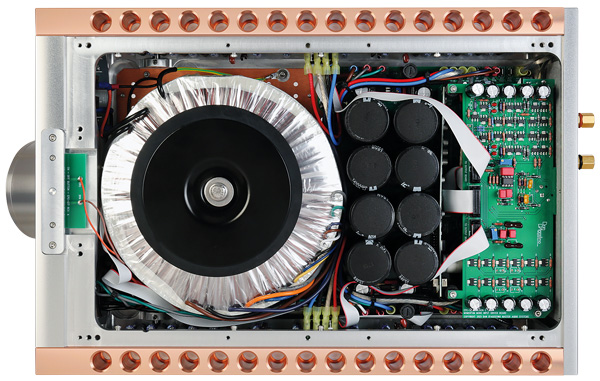
D’Agostino describes the various MxV models (updating the M400 and S250, and legacy models) as featuring ‘new concepts, components, and manufacturing techniques developed and learned throughout the past decade’. Having upgraded the original M400s [HFN Oct ’16] after six years, the MxV status clearly wasn’t developed in haste, D’Agostino adopting a Wilsonian attitude toward design stability – infrequent upgrades, but extensive when undertaken. Even the suffix to identify them has resonance with the company’s history: MxV stands for ‘Mass times Velocity’, which is the definition of Momentum.
As expected, the upgrades are genuinely comprehensive and much trickles down from the research undertaken for the flagship Relentless monoblocks [HFN Mar ’20]. The latter’s fresh front-end circuitry has been adapted for these Momentum MxV amplifiers, while all major sections – the power supply, and the input, driver and output stages – have been upgraded.
Among the developments are a new transformer winding pattern credited with the potential for over 50% more current from the same transformer ‘footprint’, and new transistors in both the driver and output stages. What’s described as a new ‘bias stability circuit’ provides a claimed 50% increase in operating bias, which may remind readers of Dan D’Agostino’s Krell philosophy of a lifetime ago, directly expanding its Class A operation. This, of course (for audiophiles of a certain, er, bias) might promise a correlation with improved sound quality.
Upgrade Path
Now, the good news. The MxV upgrades are retrofittable to earlier Momentums, including the S200, S250 and M300, but it does require a return to the factory. The price quoted to upgrade an M400 to M400MxV status is £29,000 per pair. Before you let out an audible gulp, please factor in depreciation, the many years of usage of your M400s and the fact the M400MxVs cost around £12,000 more per pair from new.
Once in place in the listening room – and at 43kg apiece without their optional stands you may need help – it couldn’t be easier. Input is via a single XLR for balanced operation (there’s an RCA-to-XLR adapter in the box if your preamp doesn’t have balanced outputs) while the sturdy binding posts take spade connectors or bare wire. The only other items on the back are for IEC mains, sockets for remote on/off triggers and a three-way mini-toggle to select the meter illumination. As before, on/off is through a soft-touch button secreted away underneath the front edge of the fascia.
![]() Petty Differences
Petty Differences
Luckily for me, years of Momentum Stereo usage had attuned my ears to the nature of the archetypal ‘D’Agostino amplifier’. Despite my own predisposition toward valves, I always found Dan D’Agostino’s solid-state creations to be as accessible and ‘ear-friendly’ as the best valve amps, if slightly less warm. That has changed with the MxV upgrades, and I am tempted to phone a reader who found the previous generation of M400s too edgy. These sound positively cuddly.
It started with the magnificent Tom Petty CD collection, ‘Wildflowers’ & All The Rest [Warner 093624899112]. Rich with guitars of various textures and Petty’s distinct, slightly nasal voice, the first impression was of a deceptively analogue-like warmth which – I swear – made me think of open-reel tape rather than vinyl. The title track, despite familiarity to any Petty devotee, possessed a freshness which I had to attribute to the amplifiers’ greatest strength: openness.
It’s worth recalling that, since Day 1, all Momentum amplifiers have delivered bottom octave solidity and extension rivalled by the precious few. Allied to this foundation has always been a retrieval of detail which would impress Sherlock Holmes, while the transient attack across the frequency spectrum has never been less than fast, smooth and convincing. Decay has always been correctly progressive while the three-dimensionality of the soundstage was always close to the best of the triode glitterati. What the Momentum amplifiers needed was a touch more warmth – not that they were ever too icy or hygienic.
The Right Stuff
What the MxV upgrade brings to the party is a removal of any last traces of the artifice often attributed to either solid-state amplification or digital sources. It was clear with the Petty CD and with The Amboy Dukes’ Journey To The Center Of The Mind [Repertoire REP 4176WZ], also on CD, that the openness, speed, clarity and other strengths of the M400MxV were having the opposite of the anticipated effect: instead of forcing the listener to hear more of what was wrong with digital playback, it seemed to be showcasing what was right. Ted Nugent’s fiery guitar work on the title track of the Dukes’ album had all the grit, fuzz and wail I recalled of the vinyl.
But three revelations, all on tapes, ensured that the MxV upgrades were game-changers, such that I cannot wait to hear what they’ll do to the Momentum Stereo amplifier I’ve been using for so long. First were the duets on Vronsky and Babin’s 176 Keys – Music For Two Pianos [RCA FTC-2034 open reel tape]. As ignorant as I am of classical music, a real-life piano sat 1.2m away from my left elbow as I typed. The scale and presence these recordings manifested via the D’Agostino M400MxVs was nothing short of the truly realistic.
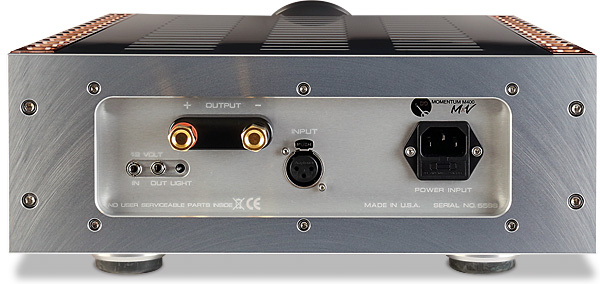
Next came classical from the other end of the dimensional strata, the orchestral majesty of Handel’s Royal Fireworks Music [Vanguard VTC-1621] with Edmund Appia conducting the Vienna State Opera Orchestra. I have no doubt that my susceptibility to its charms was enhanced by my listening sessions taking place during the weekend of Queen Elizabeth’s 70th Jubilee celebrations, but the sheer mass of the recording filled the room in width, breadth, and yes, height. Arguably, the most stellar element was the massed brass, heard with such clarity and incision that my possession of a UK passport suddenly seemed all the more life-enhancing.
Command And Conquer
Up to this point, I hadn’t really cranked up the sound to see if I could rattle the Wilson Sasha DAWs [HFN Mar ’19], which responded to the M400MxVs with such ease that my respect for them increased, even though it had already reached a state of near-worship. What I learned via the M400MxVs was that the Sasha DAWs were even more capable, more commanding than I had thought when fed a full orchestra. Imagine taking delivery of a hypercar and sticking to the speed limit, followed by a session on a track to really stretch it. This amplifier was proving too addictive.
Then came the third epiphany, an experience so revelatory that one visitor – from a rival speaker brand – was driven to say it was the best sound he had ever heard in my listening room, and he’s a frequent caller. It was, of course, the recording which helped, and it just might be the finest I have ever heard, beyond even the soundtrack to the 1967 Casino Royale or any of the usual audiophile milestones.
A New Level
Recorded in 1956, Josh White Comes A-Visitin’ [Livingston Master Tape Treasury T-1085] captured the folk-blues legend with a small group in one of those early stereo situations where multi-tracking and too many microphones were yet to infect the industry. The sound wasn’t merely captivating or convincing. It was mesmerising, the experience all the more noteworthy because my fellow listener was an ex-BBC engineer with a golden ear and four decades’ worth of pedigree.
We both agreed: a new level had been reached in realism, authenticity and sheer transparency. Truly dumbstruck at the recreation of the studio space, the harmonic overtones on the acoustic instruments, and the reproduction of White’s voice… I am humbled.
Hi-Fi News Verdict
Loath as I am to call this ‘the best’ (having heard the Relentless), these latest upgrades reassert the Momentum’s role as a top contender for the ‘state of the art’ amp. What elevates the MxV over its forebear are greater openness and transparency, vividly revealed when heard side-by-side with its predecessors. Imagine the silkiness of a 300B SET, but with bottomless bass and limitless power. It’s that special.
Dan D’Agostino Momentum M400 MxV monoblock power amplifier

The Momentum M400 MxV Mono amplifier ($79,500/pair; footnote 1) is the latest iteration of Dan D’Agostino Master Audio Systems’ debut amplifier of 2011, the Momentum Mono amplifier. Weighing 95lb, it is smaller and lighter than its entry-level sibling, the more powerful, 125lb Progression M550 Mono amplifier ($47,500/pair), and is veritably dwarfed by some other monoblocks, including the flagship D’Agostino Relentless Epic 1600 (570lb) and the Karan Acoustics POWERa mono (231lb), which I reviewed in May 2023. But if the M400 MxV’s rock-solid look and feel and its exquisite aesthetics—a sleek amalgam of silver and copper fronted by a power meter that glows green and radiates Rolex quality—are any indication, a helluva lot is going on beneath its showy exterior.Once I took a listen, I discovered sound so smooth and satisfying that the refrain “How ya gonna keep ’em down on the farm / After they’ve seen Paree,” from a WWI-era song about soldiers not wanting to return to their family farms after experiencing big city life in Paris, kept playing on repeat in my head.
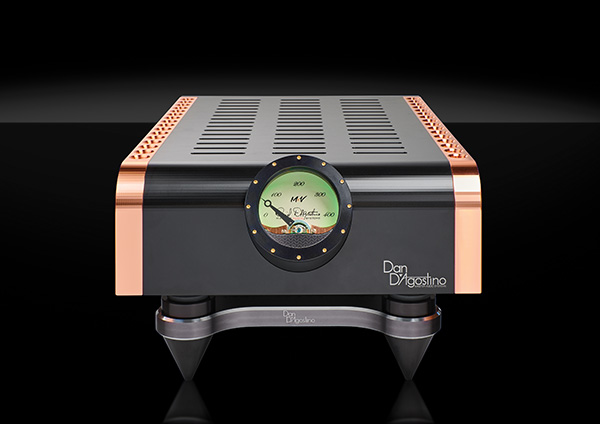
Direct from Cave Creek
What kind of amplifier is this that distracted me so from watering the cows and milking the chickens? D’Agostino’s website (footnote 2) offered a few clues. The Momentum M400 MxV is hand built; it includes discrete, direct-coupled, balanced circuitry and boasts a “new, ultra-quiet 2200VA linear transformer” with a winding scheme that is said to reduce the hysteresis effect by 90%, minimizing power and thermal loss. The new winding method also plays a role in increasing current capability by more than 50% and “offer[ing] greater headroom during dynamic passages,” which is surely aided by a bank of nearly 100,000µF of supply capacitance. All that adds up to potential output power of 400, 800, and 1600W into speaker loads of 8, 4, and 2 ohms, respectively.
For additional insight, I turned to the man himself, Dan D’Agostino, whose early designs (with Krell Industries, which he founded) redefined high-end sound. In a phone conversation spanning topics from audio to aging, we discussed the design principles behind the Momentum M400 MxV monoblock.
“The goal with the Momentum was to make something that looked very pleasing physically and had plenty of power to drive any speaker,” Dan said. “The other goal was to make the Momentum sound as good as it possibly could. I didn’t care about cost or labor; I threw in whatever technology was needed.
“The MxV upgrade is the biggest improvement I’ve made to the Momentum in the 12 years of its existence. The Relentless is clearly the best amplifier we have sonically, but it’s also the most powerful. I love the Momentum chassis, but its size dictates how much power I can get out of it. At more than 400W into 8 ohms, we’re pretty much at the peak. It’s a very, very powerful amplifier in that package, and it’s chock-full of technology from the Relentless.”
According to D’Agostino’s website, the Momentum M400 MxV’s input stage has been “re-envisioned,” with new circuit topology and new bipolar transistors said to deliver “ten times the current and power of the original devices.” These components, the website claims, “extend low and high frequency performance with reduced distortion in both frequency extremes.”
The M400 MxV’s driver stage is completely different from the one in former Momentum models or the current Progressions. It implements the Relentless line’s “inter-digitated style of driving output devices,” as Dan put it, which uses multiple high-current drivers. “At idle, it’s not doing much work,” Dan explained, “but when it’s playing music, it’s able to deliver a lot more current.”
A new bias stability circuit provides a nearly 50% increase in operating bias, the website informs—more class-A goodness without overheating, because the Momentum’s stylish copper heatsinks keep things cool.
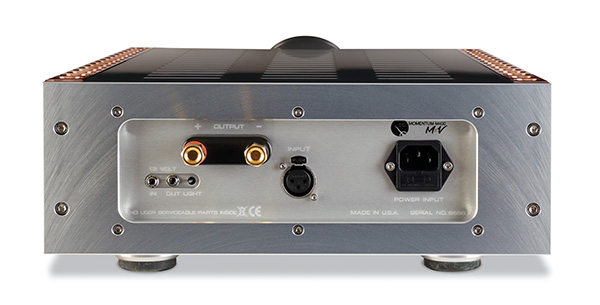
Innovations in the output stage have also trickled down to this Momentum from the Relentless line, including the output devices: 26 new, high-output transistors run at a fast 69MHz, “permitting the Momentum M400 MxV to achieve incredible bandwidth,” the website states (footnote 3). The design is optimized for maximum thermal transfer from the transistors to the heatsinks. A simple tweak—a capacitor-resistor network connected to each transistor—ensures stability with low-impedance speakers. Indeed, D’Agostino claims the MxV can drive any speaker to its maximum output. “It’s a technical marvel for what it can accomplish, given its size,” he noted proudly. “There is no room left in the inside of that amplifier. You can’t even put a pencil in there. Yet we’ve managed to isolate all the stages and components from each other and from outside noise.
“The Momentum takes a tremendous amount of time to build because everything must be located with painstaking precision. The Progression [which uses none of this trickle-down technology] gives me some room internally and some economies of scale for assembly. I can make probably two or three Progressions in the time it takes to make one Momentum. “If I didn’t have my company, and the only audio product I could buy were one of my amplifiers, it would probably be the Momentum. It is not a budget product, but it gives you the most of our type of sound for the least amount of money.”
Our type of sound? What’s that? On prior occasions, Dan had described the Momentum’s sound as more refined than the Progression’s, but I wanted to know more. “We’re trying to get as close to the musical event as possible,” he explained. “I want to see into the music and hear who’s playing the background. [That] is what I listen for in every product. I know the vocalist is going to sound great and the instrumentation will be spot on. But I want to hear the musicians in the background.
“I never thought it would be possible to hear them with clarity until I made the Relentless. I like a particular old Billie Holiday cut (footnote 4). She probably had some of the best back-up musicians that were available in her day (footnote 5), and I want to hear them. Lo and behold, with the Relentless I can hear some of the changes on their instruments. I can even hear the musicians breathing back there. That’s the stuff that can give you goosebumps … if you can hear it.
“After I designed the Relentless, I brought it home to see how much of its output stage we could incorporate in the Momentum M400 MxV. I laid out four different boards and tried them in a Momentum M400 MxV. I was just awestruck by the amount of depth and space created by the change. Then I realized I could accomplish even more by working with the input stage and the drivers. I did it and got very close to the Relentless sound. It doesn’t do everything the Relentless does but, boy, when it comes to space and depth, it is right there.”
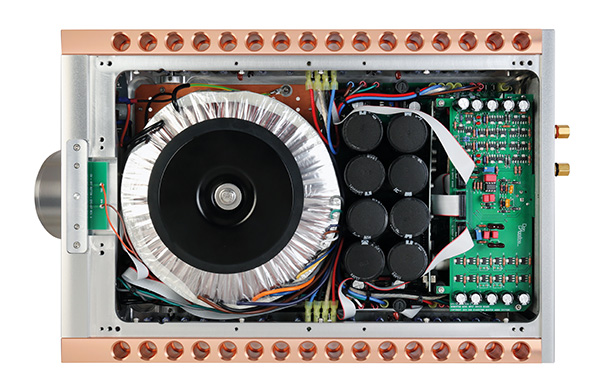
D’Agostino and measurements
With every D’Agostino product I’ve reviewed—this is the fourth—some measured results have correlated poorly with what I was hearing (footnote 6). I asked Dan to comment.
“I also use measurement techniques,” he replied. “I have the same equipment John has, and I have some other equipment that’s probably more than Stereophile wants to buy. But I use measurements to see if I’m on the straight and narrow performance-wise—to make sure that the product doesn’t do anything stupid.
“At Krell, I lived and died by measurements. Make no mistake about it: Here, I don’t care about them. They’re only a means to an end. If I make something that has higher distortion than the product just before it but sounds infinitely better, that makes me happy.
“In the end, I’m only interested in how good a component sounds. I’m never going to make something that sounds impolite, buzzes, hums, or only works with a certain speaker. But I do not care about the measurements when I look at my Audio Precision or HP stuff. When it shows me a reasonable output and indicates that it’s doing a good job, that’s all I care about.”
Setup
To audition the M400 MxV in an optimal setup, I paired it with a D’Agostino Momentum HD preamplifier. These two components offer balanced inputs and outputs only, so obviously I used XLR interconnects for the pairing—alternately Nordost Odin 2 and AudioQuest Dragon. All the D’Agostino products I’ve reviewed so far come with hard rubber feet. To my ears, good after-market footers make an audible difference. Wilson Audio Pedestals answered the call.
For months, I’ve used the Stromtank S 2500 Quantum MK II battery power source to power my reference Progression M550 monoblocks and my entire front end. Thus powered, the M550s sound just right to me. Dan, however, has always maintained that his amplifiers sound best plugged directly into the wall. I’ve tried that; I’ve also plugged the M550s into the AudioQuest Niagara 5000 power conditioner. Invariably, the Niagara 5000 and the Stromtank resulted in a smoother, more musical sound than when the M550s were plugged directly into the wall.
However, I had recently upgraded my electrical service. As I detailed in my last review, I replaced all the aluminum wiring that the electrician could access with copper. Thanks to Ed DeVito of Audio-Ultra, I also replaced a breaker panel that used aluminum buses, and I’ve installed an Environmental Potentials EP2050EE surge protector/filter to absorb noise between 3kHz and 1MHz, generated by appliances and heaters (footnote 7). So, this time, when Dan advised that the M400 MxV is more “robust” with wall power and that the leading edges of low-frequency notes would sound better, I gave it another try.
For the first time since music filled my dedicated music room, I preferred the sound of an amplifier plugged directly into the wall. All the other components were powered by the Stromtank. It was time to listen.
Sonic and musical epiphanies
I had certain expectations about what I would hear when I began my audition. I anticipated that the Momentum M400 MxV would have a similar top-to-bottom sonic signature to the Progression M550 but that its bass would be less impactful, less dynamic. Most differences, I expected, would probably be best described as refinements of that house sound Dan had mentioned. Considering that the Momentums cost some $30,000 more than the Progressions, I hoped for a great deal of refinement.

I’m always amused when my expectations are proved wrong. The strength and quality of bass with the M400 MxV blew me away. Every audiophile has their favorite recorded bass assault. One take-no-prisoners excerpt I keep referencing is the second movement of Shostakovich’s Symphony No.11 as performed by the Boston Symphony Orchestra under Andris Nelsons on Shostakovich: Symphonies Nos.4 & 11 “The Year 1905” (24/96 MQA, DG/Tidal). The 400/800/1600Wpc MxV delivered bass that equaled, if not surpassed, that of the 2100/3600/6000Wpc Karan Acoustics POWERa monoblocks. I was especially drawn to the sound of the symphony’s huge bass drum: Its timbre was realistic, its hollow vastness superbly realized, and the balance between leading edge, resonance, and decay of each momentous thwack was awe-inspiring.
The M400 MxV’s bass superiority didn’t end there. Most symphonies rest on a foundation of double basses, which, in a live concert, remains strong out to the last rows of the hall (footnote 8). An orchestra’s bass section is often so strong that, if you sit the right distance from the stage, you can sometimes feel it resonate in your gut.
I’d always assumed that the Progression and POWERa monoblocks elicited as much bass from my speakers as they could possibly produce in my 16′ × 20′ × 9.25′ listening room. Wrong again. On the Shostakovich, I was so impressed by the strength and solidity of the bass line that I felt compelled to share it. I invited my friend Scott over for a listen. Scott echoed my impression: “It’s like a different recording!”
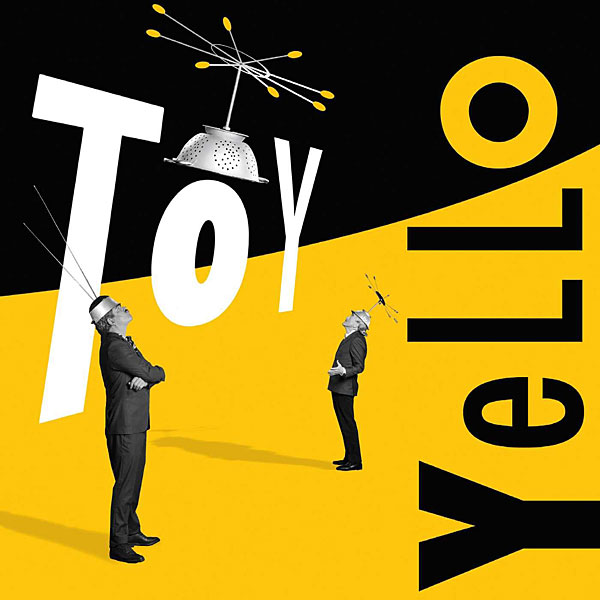
When we turned to the pounding bass in Yello’s “Electrified II,” from Toy (24/48 MQA, Polydor/Tidal), the first low bass thwack sounded considerably stronger than with any other amplifier that had graced my system. And every subsequent beat pounded with renewed force. On a very different work, François Xavier-Roth’s Record-to-Live-For rendition of Mahler’s Symphony No.4, with period-instrument orchestra Les Siècles (24/96 WAV, Harmonia Mundi HMM 905347), the reinvigorated double bass line presented in true, full sonority, rendering this piece anew, in fresh colors.
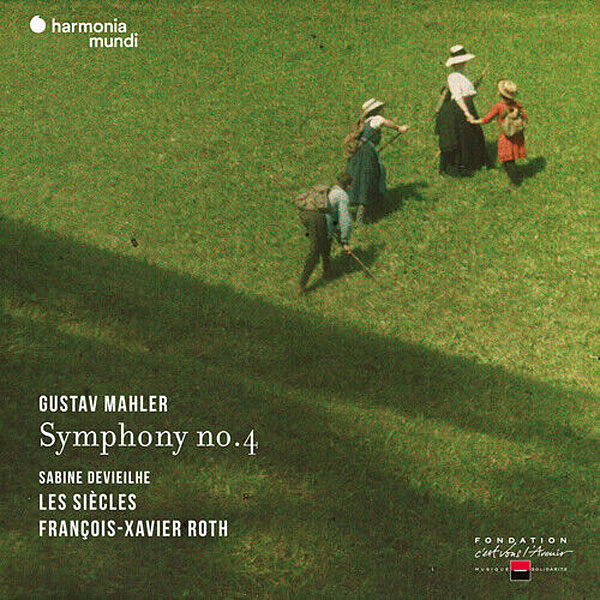
Scott asked to hear the live recording of Monk and Williams’s “‘Round Midnight,” from Bill Evans’s At Shelly’s Manne-Hole (Live) (24/192 MQA, Riverside/Tidal). “Wow!” he exclaimed. Neither of us had heard such bass in this system before.
The MxV’s magic, however, was not limited to its bass. “The cymbals are fantastic too,” Scott said when the track concluded. “I sat on the edge of my seat.”
Above its fine, true midrange, treble sounded less bright and forward on the M400 MxV than with the Progression M550. Gut-stringed baroque violins, played correctly, may have a more pointed, less rounded sound than modern violins with metal strings, but their leading edge is finely focused. The MxV faithfully conveyed that distinction. Cymbals made a huge clatter when the music called for it, but they never sounded glassy. And when Shostakovich’s score demanded that horns blast and piccolos scream, they did so with convincing realism.
On Debussy’s Sonata for Flute, Viola & Harp, from Debussy: Sonates & Trio (24/96 MQA, Erato/Tidal), color and contrast were striking and the intimate details of harp plucks, palpable. The depth and resonance of the Salle Colonne, in Paris, came through clearly, and sonic transparency was superb. As captivating as the sonic performance was, it was not a distraction: It was still the musical performance of this wonderful work that held me spellbound.
In my review of the Karan POWERa monoblocks, I raved about how distinctively they depicted the four period instruments on the Chiaroscuro Quartet’s recording of Mozart’s Prussian Quartets (24/96 WAV, BIS 7318599925585). The M400 MxV shed further light on those instruments, raising from the shadows even the subtle fricative whisper of bows as they were drawn across strings. The sound wasn’t as brightly illumined as through the Karans, but it flowed with exceptional ease. The rich timbre of Claire Thirion’s gut-stringed cello was particularly enchanting, and the higher- and lower-pitch instruments balanced each other ideally.
I recently reviewed the five new piano works by Vijay Iyer, Derek Bermel, Anthony Cheung, John Harbison, and Wang Lu on Shai Wosner’s Variations on a Theme by FDR (24/96 WAV, New Focus Recordings FCR359; footnote 9). Wosner’s piano sounded fuller and more resonant with the M400 MxV than with any other amplifier I’ve had at home. The piano’s low end and midrange, in particular, sounded as realistic as I’d ever heard it on my system, and the vibration and decay of each note were more convincing.

Vocals were special. Soprano Sandrine Piau’s recording of Carl Loewe’s lieder “Ach neige, du Schmerzenreiche,” from Chimère (24/96 MQA, Alpha 397/Tidal), sounded more transparent than through the Progression. I could hear the heart behind the voice. The very different, ringing voice on tenor Jonathan Tetelman’s Arias (24/96 WAV, Deutsche Grammophon 4862927; footnote 10) has long been a test for my system, with squillo often obscuring all else. With the M400 MxV, I could hear the warmth at the core of Tetelman’s voice on the highest, strongest, and brightest notes.
How wonderful it was to hear again, after many years, the divine voice of Kathleen Battle in “Vorrei spiegarvi, o Dio!” on Kathleen Battle Sings Mozart (16/44.1 MQA, Warner/Tidal). It’s easy to understand why Battle chose to open her recital with this concert aria. Aside from a challenging high E that pushes her into the uppermost reaches of her vocal compass, this aria’s tessitura lies comfortably in the middle of the most heavenly part of her range. Thanks in no small part to Christopher Parker’s engineering and the Abbey Road acoustic, this recording is flawless, and the M400 MxV delivers every note as if it were a precious pearl.
Conclusion
D’Agostino’s Momentum M400 MxV mono amplifier exceeded my expectations. Its relatively compact size belies its stellar performance: massive bass, mellifluous midrange, and well-measured treble. The clarity and ease with which it handles even the most challenging recordings is remarkable. It is one of the most musical, truthful, satisfying amplifiers I’ve ever heard in my system and one of the most striking aesthetically.
Audiophiles wishing to experience the edge of the hi-fi envelope should visit a dealer or an audio show exhibiting the Momentum M400 MxV and listen to it. Those who audition a pair and are blessed with the wherewithal to seriously consider their acquisition will find it tempting, I suspect, to take them home.
